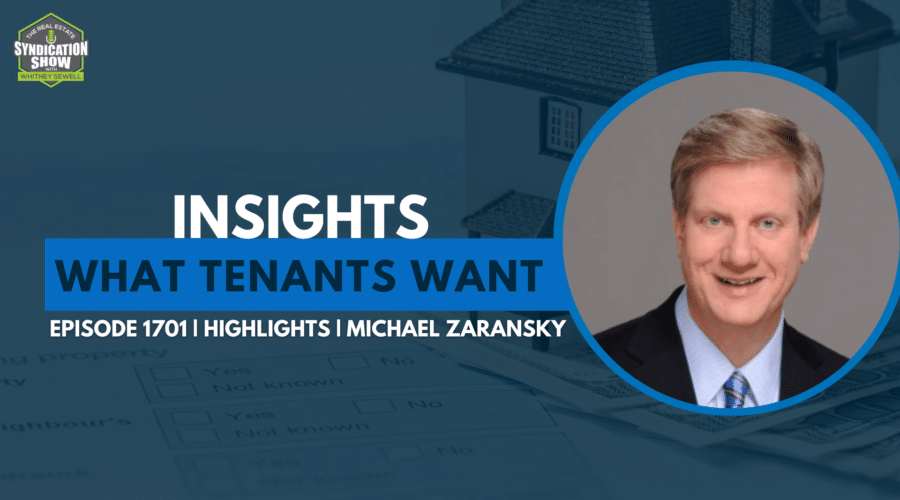Cash-on-cash return and internal rate of return (IRR) are two formulas that help investors evaluate the profitability of a real estate asset. While both calculations produce a profit projection based on cash flow and the initial equity investment, only the IRR considers the value of money over time. Here’s what you need to know about the differences between cash-on-cash return and IRR.
Life Bridge Capital is a leading real estate syndication company. We offer our investment partners the opportunity to leverage shares of multifamily rental properties into a passive monthly income. Learn More
What is Cash-on-Cash Return?
The cash-on-cash return, or CoC return, is a method that real estate syndication sponsors use to establish a project’s expected return. Potential investors can use this projection to vet the project, and the sponsors themselves also consider it when determining the viability of a project.
The CoC return is expressed as a percentage that represents the amount of profit an investor can expect based on the amount of capital that an investor provides.
How to Calculate a Cash-on-Cash Return
First, find the cash flow by subtracting operating expenses and debting service from the income. Then, to calculate the CoC return, divide the initial equity investment by the annual cash flow.
For example, if a limited partner invests $100,000 in a syndication asset with a cash flow of $1,250,000, the CoC return is 8 percent. A financially sound project should have a minimum average CoC that is at least equal to the preferred return rate.
The CoC return calculation can either include or exclude the profits realized from the property sale, and both methods are helpful. By leaving out the gain from selling the property, one can project the potential earnings during the holding period while the project is active. Alternatively, including the profits demonstrates the total amount investors could earn throughout the project.
When to Use a Cash-on-Cash Return
As you will see below, the CoC is much easier to calculate than the internal rate of return formula. It also works best for assets that produce consistent income over time, like multifamily real estate.
While it gives potential limited partners a quick metric for comparing investment projects, the project sponsor can use the calculation to determine the best financing method. The cash flow component of the formula takes into account the cost to service the debt, including principal, interest, and fees. Consequently, the CoC return provides a picture of actual profit, excluding income taxes.
Investors most interested in passive income may lean toward reliance on the CoC return. The figure expresses the current return, giving them an indication of what they can expect in the near term.
What is Internal Rate of Return?
The internal rate of return (IRR) serves as another earnings prediction model. Unlike the CoC return, however, IRR accounts for the time that an investor’s funds are tied up in a project. After all, $1 today is worth more than $1 ten years from now.
IRR measures the total return on an investment, and it weighs early cash returns more heavily than later ones. In this way, the formula accounts for the time value of money.
How to Calculate the IRR
Because IRR does factor in time, it requires a more complex formula. IRR-specific calculators and the Microsoft Excel IRR function make the job much easier. The final product is a percentage that expresses the rate of growth over a period of time as related to the initial capital contribution.
Like the CoC return formula, the IRR calculation requires knowledge of the amount of cash flow. The IRR cash flow calculation includes profits at sale, distributions, and the proceeds from any refinance.
This IRR formula relies on the assumption that profit distributions are paid annually and that cash flow is the same across all time periods. To be even more accurate while accounting for time, use the XIRR calculation instead.
The XIRR Formula
The XIRR formula allows for greater control over the growth analysis. It connects series of cash flows to their corresponding time period, resulting in a more precise calculation. Like the IRR formula, XIRR can be calculated in Excel.
Benefits of Using IRR
Compared to the CoC return, the IRR and XIRR provide a more complete picture to investors evaluating their potential earnings and to project sponsors determining whether a project is worthwhile.
First, the IRR demonstrates how much punch a project truly packs. A profit expressed as a dollar figure can be either impressive or disappointing depending on the length of time it takes to earn that profit. A project that doubles an investor’s capital within one to two years is remarkable. However, the same doubling over seven to ten years barely keeps up with a stock market portfolio.
Investors with years ahead of them to grow their wealth can benefit from the IRR calculation when creating long-term financial goals and investment plans.
CoC vs Preferred Return
A preferred return designates which investors receive profits first and in what amount based on their capital contributions. These clauses in the PPM allocate the first profits to the limited partners, expressed as a percentage—usually 8 percent.
An 8 percent preferred return means that limited partners receive the first profits until they receive back 8 percent of their initial equity investment each year. The sponsor does not earn any of the returns until they meet that 8 percent hurdle. After the passive investors receive the preferred return, the profit split moves to the next tier in the syndication agreement.
The CoC return is a measure of your ROI, whereas the preferred return denotes the percentage up to which LP’s will receive the first cut of profits.
Final Thoughts
Both the CoC return and IRR belong in a real estate investor’s toolbox. These two formulas provide valuable information regarding the potential growth of a capital investment in a real estate project. Use the results of each to weigh a potential project against individual investment goals.
Life Bridge Capital is a leading real estate syndication company. We offer our investment partners the opportunity to leverage shares of multifamily rental properties into a passive monthly income. Learn More



